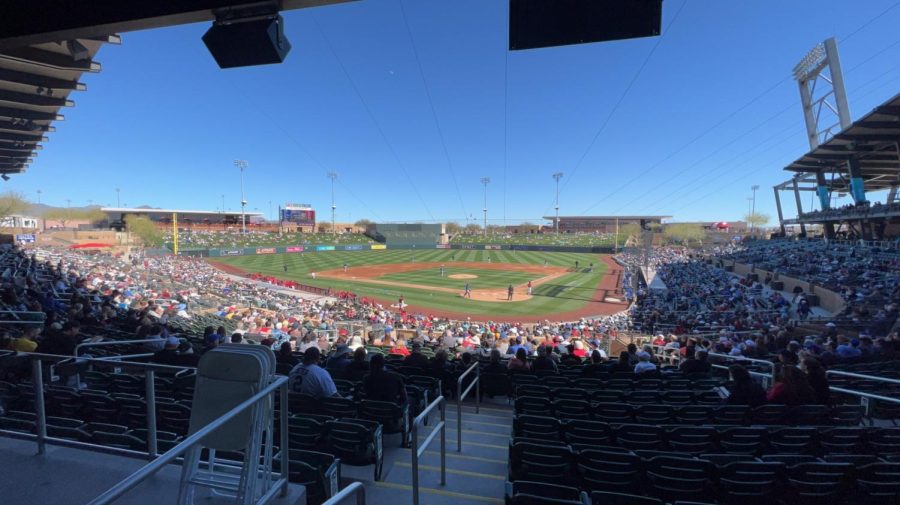Spring Training baseball fans at The Fields at Talking Stick give their take on new MLB rules
Several new rules put in place this season
March 4, 2023
In the minor leagues last season, fans caught a glimpse of the new rules of baseball; the pitch clock, new shift restrictions, and larger bases.
According to MLB.com, the pitch clock sped up games by an average of 25 minutes. Craig Stevenson, Dodgers fan from Los Angeles, has lived in Arizona for a few years, and likes a faster baseball game.
“I have only watched a few of the Spring Training games, but I think that that is probably a positive, I like the pitch clock idea,” said Stevenson. “I think it needs to be a little bit more like, you need to give the pitcher a warning before you charge a ball or a strike.”
In the new rules, pitchers have 30 seconds between batters, 15 seconds between pitches, with no runners on base, and 20 seconds with runners on. If the pitcher violates the clock, a ball is added to the count. If the hitter violates the pitch clock, a strike is added to the count.
On Monday, Diamondbacks pitcher Joe Mantiply didn’t finish his warmup between innings in time and Chicago Cubs outfielder Brennan Davis wasn’t ready in the batter’s box either. The resulting double-violation of the new pitch clock rules made the count 1-1 as soon as Davis stepped into the box to begin his at bat.
Derek Medak of Mesa, is both a Diamondbacks and Seattle Mariners fan, who has lived in Arizona for a year and a half.
Medak thinks the pitch clock “keeps the game going quick, keeps the kids entertained.”
“It’s nice because it can keep the kids entertained, but :15 seconds is a little too fast,” Medak said.
The base sizes have increased from 15 to 18 inches and were shown to reduce injuries in the MiLB last season.
Medak also weighed in on the new base size
“I’m not a big fan of that, it shortens the distance. I bet there will be more stealing this year,” Medak said. “I bet the fielders don’t like it.”
The new shift restrictions require two fielders on either side of second base, and the fielder’s feet to be set in the dirt by the time the pitcher begins his wind-up.
Derek Orton, a resident of Chandler is a fan of the shift restrictions.
“They have the tablets and everything else, they can see the history of where they’re hitting, it evens it out, makes it a little more fair,” Orton said.
However, teams are still finding ways around the rule change. Generally, by moving an outfielder to the other side of the outfield, to play where the extra fielder would have played, had the shift been on in the infield.
The rule changes brought mixed reviews from fans. The MLB doesn’t seem to currently have any plans to change the rules, despite some questions that have been raised when it boils down to peculiar situations.


